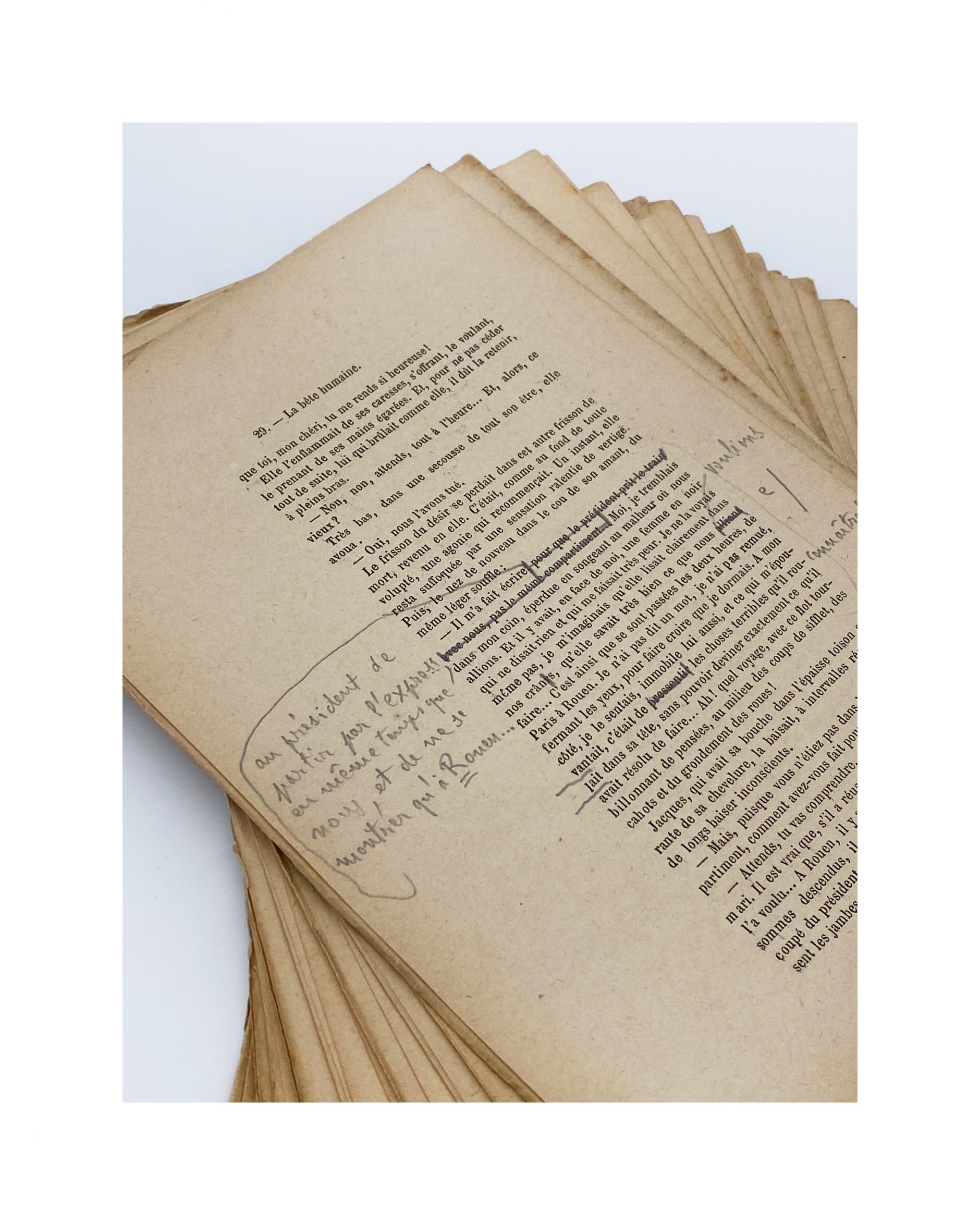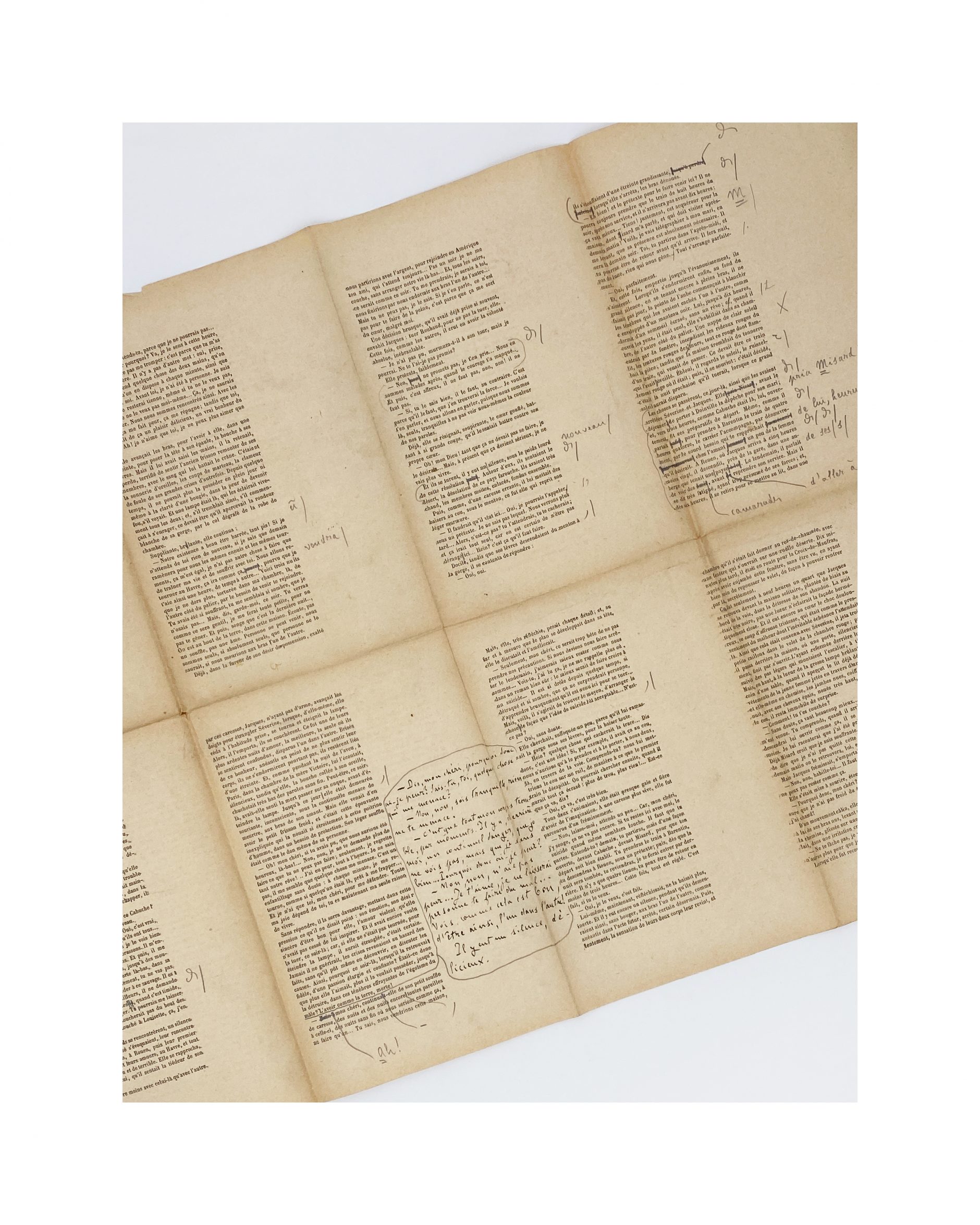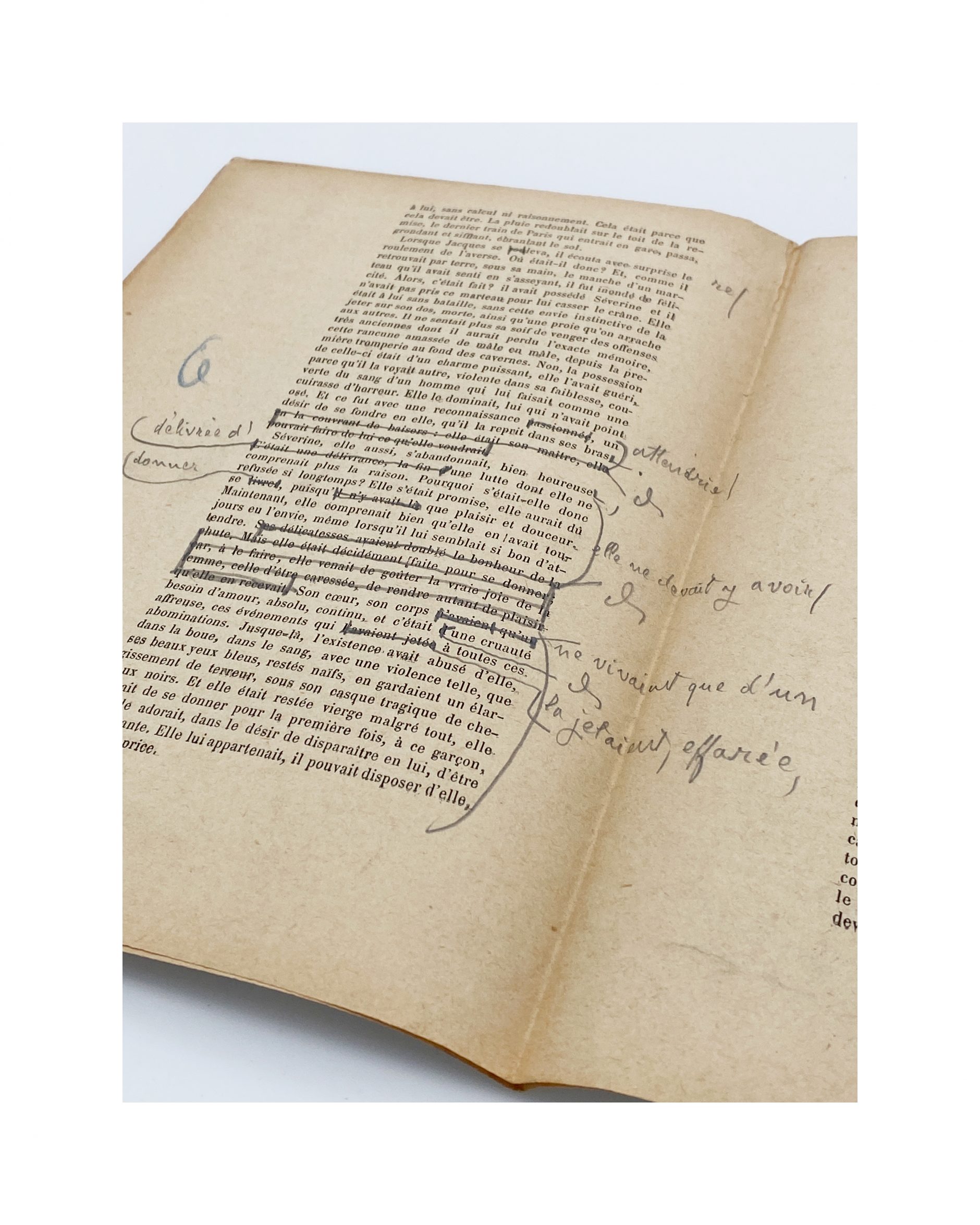ZOLA, Emile (1840-1902)
Corrected proofs for his novel The Beast within
Paris, January 1890, 45 proofs printed on recto
« I love you, I will never let anyone hurt you… See, how good it is to be so, one in another ! »
Fact sheet
ZOLA, Emile (1840-1902)
Corrected proofs for his novel The Beast within
Paris, January 1890, 45 proofs printed on recto
Very good overall condition except some slightly frayed margin on the first folios, some browning
Precious and complete set of proofs, abundantly corrected by Zola, for the original edition of his masterpiece The Beast within
The Beast within in gestation
The folios of this set of proofs evidence on the author’s progress in writing his masterpiece. Emile Zola indulged in a meticulous rereading of all the lines, refining the style, redacting and correcting for a greater accuracy of tone and rhythm. Thus, the whole is abundantly annotated, with the exception of folio #35 to #38. The most important corrections can be found on folio #2 to #13 and #40, which correspond to chapters I to IV and XI. Also, Georges Charpentier (his editor) added notes on the twenty-nine folios and two mentions indicating to Zola to henceforth respect the paginated division.
These proofs present an intermediate state of progress between the manuscript and the published text. It is evidenced by extracts such as:
– « Roubaud, près de sa femme écoutait, en fixant également sur elle des yeux vacillants. Il y eut une minute de mortelle angoisse » become « Près de sa femme, Roubaud écoutait, en fixant également sur elle ses gros yeux pâles » then, in the final version, « Près de sa femme, Roubaud écoutait, en fixant sur elle ses gros yeux vifs ».
– « Seulement, ce matin-là, Roubaud dut reprendre haleine, comme si sa respiration lui manquait, à la suite d’un saisissement inutile. Il hésitait, il chercha avant de se rappeler ce que lui avait dit son collègue » become « Seulement, ce matin-là, Roubaud, hésitant, dut chercher, avant de se rappeler ce que lui avait dit son collègue ».
Note also a great care given to typography, proof of a meticulous and demanding proofreading.
Folio #40 includes an important addition of seventeen lines, in which the author plays with the lyrical register. Love and death invite each other:
« – Dis, mon chéri, pourquoi donc ai-je peur ? Sais-tu, toi, quelque chose qui me menace ?
– Non, non, sois tranquille, rien ne te menace.
– C’est que tout mon corps tremble, par moments. Il y a, derrière moi, un continuel danger, que je ne vois pas, mais que je sens bien… Pourquoi donc ai-je peur ?
– Non, non, n’aie pas peur… Je t’aime, je ne laisserai jamais personne te faire du mal… Vois, comme cela est bon d’être ainsi, l’un dans l’autre !
Il y eut un silence délicieux. »
The novel
The Beast within, the seventeenth chapter of the Rougon-Macquart saga, was written between May 1889 and January 1890 and was published by Georges Charpentier the first week of March 1890, after a preview publication in the weekly La Vie populaire from 14 November 1889 to 2 March 1890. Like in Germinal (1885), Emile Zola targets an aspect of the industrial and proletarian sphere of the late nineteenth century.
In this novel, the main characters are murderers. Émile Zola has amalgamated several very real events, probably including the crimes of “Jack the Ripper”, painting a pessimistic, violent and monstrous fresco, where one kills oneself for reasons as diverse as greed, jealousy or even hereditary madness. By conducting this narrative and questioning remorse, he inscribes his work in contemporary discussions on the moral and social meaning of crimes. Zola nourished his novel with the reading of Dostoevsky’s Crime and Punishment (French translation published in 1885) and criminological works by Cesare Lombroso, Prosper Lucas and Gabriel Tarde. He took the opportunity to satirize a judiciary subservient to power by the character of Judge Denizet. The miscarriage of justice he commits underlines the limits of human justice and the impossible infallibility of any rational method.
The readership is seized by the encounter between tradition and modernity, by the breathtaking alloy between archaism of instincts and technical progress. The locomotive takes on human features and becomes an individual of its own, until the tragic “blind and deaf beast that would have been released among death“.
Finally, to this lyrical part is added a dimension of fantasy, as Henri Mitterrand explains: “The Human Beast survives by its fantastic aspects, by the intensity of its leitmotive and rhythms, and by the perfection of some of its pages – the last, for example – where the extravagances of the action and the baroque modernity of the setting are surprisingly harmonized“.
The literary relics of Emile Zola are very rare in private hands. Indeed, according to the novelist’s wish, Alexandrine Zola, his wife, placed almost all of his handwritten documents in the custody of the French nation in 1904. Thus, it is at the Bibliothèque Nationale de France that the precious files and a large part of the corrected proofs of the Rougon-Macquart are located, and therefore no longer transferable.
This set of proofs remained unknown to Henri Mitterand for his edition of The Beast within in the bibliothèque de la Pléiade (Paris, Gallimard, Nrf, 1966, reissue 2021)





